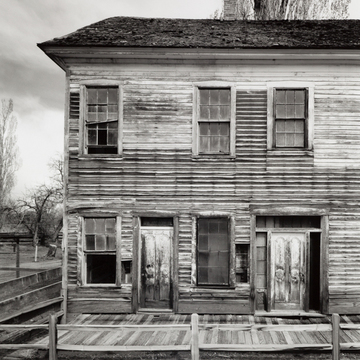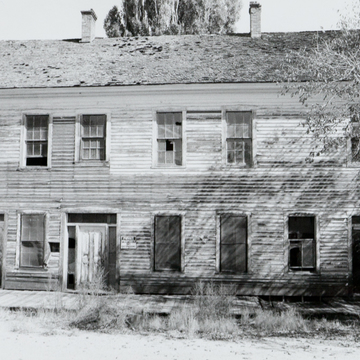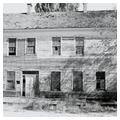This stage station was the third structure Samuel Buckland built on this site on the cottonwood-lined bank of the Carson River. In 1859 he established a tent hotel to serve travelers on the Overland Trail. The following year he built a house
The current two-story, wood-frame building has a T-shaped plan with a long rectangular section facing the road. Cornice returns and symmetrical facades lend order to the simple exterior. The rear ell is a composite of small one-story additions including an adobe structure, which was probably an extant springhouse. Built a year after the abandonment of Fort Churchill, the station undoubtedly contains materials from the fort, such as doors and windows and the adobe nogging on the first floor. The Nevada Division of State Parks acquired the old station in 1994 and has rehabilitated it as a visitor center.




